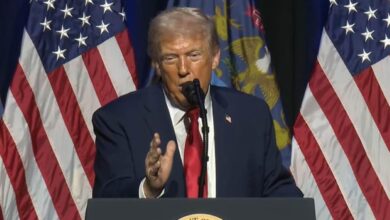What did Colombia’s anti-drug policy fail?
Coca plantations expanded by 160% in less than five years. The United States called this increase "unacceptable"

According to figures handled by the US Drug Enforcement Administration (DEA), coca cultivation in Colombia increased from 188 thousand hectares in 2016 to 209 thousand in 2017, which translates IGNORE INTO an increase of 11%. The data show that the potential production of pure cocaine rose by 19% compared to 2016.
Jim Carroll, director of the Office for Anti-Drug Policy of the United States, urged the Colombian government to improve its strategies to eradicate narco-crops. "President Trump's message to Colombia is clear: this record growth has to reverse. Although eradication efforts improved, in 2017 these were erased due to the acceleration in production. This new increase is unacceptable and the government should do more" he said.
Leer en español: ¿En qué falló la política antidrogas de Colombia?
In response to the threatening statement from the United States, Colombian President Juan Manuel Santos indicated that there was "a smaller increase than expected. That is conjunctural. The important thing is to have a strategy and for the first time you have something viable and effective to combat this scourge more effectively". Luis Carlos Villegas, Minister of Defense of Colombia, stressed that "the official figures for Colombia are not those of the State Department (of the United States), but those of the United Nations, which will come out in two or three weeks."
Although Santos already announced a rethinking of crop eradication strategies, with the use of drones and armored trucks, the current anti-drug policy did not have a strong impact. By 2017, the Colombian government had proposed to exterminate 100,000 hectares through crop substitution and forced eradication. Although the proposed goals were met, according to the Colombian government, the DEA refutes that Colombia's anti-drug policy failed for the following reasons:
Los países consumidores tienen la responsabilidad de reducir el uso de sustancias ilícitas y de combatir a las organizaciones que las distribuyen. Esta no es una lucha solo de Colombia, es una batalla de todo el mundo. pic.twitter.com/GnRnRw5RXP
— Juan Manuel Santos (@JuanManSantos) 26 de junio de 2018
Dialogues with the FARC
In March 2017, the Colombian government admitted that the peace pact with the FARC (Revolutionary Armed Forces of Colombia, in English) was a determining factor in the increase in coca cultivation. Foreign Minister María Ángela Holguín acknowledged that "after several years of sustained reduction, coca plant crops unfortunately increased in 2014 and 2015, in relevant percentages of around 40% in each of these years."
According to BBC Mundo, DEA suggests that "the Colombian government softened its eradication operations in areas controlled by the FARC during the peace negotiations (…) to avoid armed confrontations with the guerrilla group." Although the peace talks with the guerrillas concluded in 2016, they cost the government a significant setback in the fight against drugs.
You might be interested: Chile: The new Latin American dream?
Fumigation suspension due to health risks
Another reason for the increase in coca crops was the suspension of fumigation with glyphosate in 2015 due to the harmful effects it has on the health of the communities near the fields. Santos' decision to stop using the herbicide without proposing alternative solutions to illicit crops brought divided opinions.
Former President Álvaro Uribe criticized Santos after the announcement. "Without replacement for glyphosate, they suspend fumigation and advance illicit crops," he said. He also pointed out that coca cultivation in Colombia had grown 43% in the areas controlled by the guerrillas FARC and ELN (National Liberation Army), in alliance with other criminal gangs.
Substitution of coca in exchange for pensions
Another reason why coca cultivation increased in Colombia was the method of crop substitution, which generated an unintended incentive to sow coca, producing the opposite result than expected. The substitution of crops proposes to the peasants to eradicate their illicit crops and in exchange they would receive one million pesos a month for a year and 19 million pesos to plant legal products. The peasants "assumed that the more coca they had, the more money they would receive from the government at the time of the replacement," said the Colombian newspaper El Tiempo.
Coca crops in Colombia concern the United States government because the reports show a direct relationship between the increase in coca production in Colombia and the increase in consumption in the United States. The DEA registered 81% of new coca users between 2013 and 2016. The data also indicates that 94% of the cocaine seized in 2017 is Colombian. From the figures of the DEA, that same year President Trump threatened to decertify Colombia if it did not reduce the coca fields, which would imply the suspension of the international cooperation that the US provides annually to the coffee country.
Despite Trump's reprimand words, the president reached an agreement with Santos that contemplated halving coca cultivation by 2023. This pact produced a relief that did not last long. Trump said in the recent statement that he will not hesitate to dismiss Colombia as a failed country in the fight against drug trafficking if it does not show significant progress in the eradication of cocaine crops. The US threat comes at a time of transition for Colombia. The weight of the difficult fight against drugs will fall on the winning candidate Iván Duque, who will enter presidential work from the first week of August.
Latin American Post | María de los Ángeles Rubio
Translated from “¿En qué falló la política antidrogas de Colombia?”





